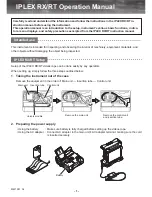
Specifications
WVR6100, WVR7000, and WVR7100 Specifications and Performance Verification
1- 23
Table 1- 33: Jitter Display characteristics (Option PHY)
Characteristic
Performance requirement
Reference information
Type
Displays numerical and graphical
readouts of peak-to-peak jitter.
Jitter derived from demodulated
recovered clock as described in
SMPTE RP192-2003.
Option PHY adds Jitter Waveform
display.
High Pass Filter
Settings
Selectable 10 Hz, 100 Hz, 1 kHz,
10 kHz, or 100 kHz high pass filter
applied to demodulated jitter before
peak detection.
High-pass filter has type-3 response
for low-frequency rejection of 60 dB/
decade below the filter setting.
High-pass filter applies to jitter
readout, jitter waveform and Eye
diagram display. Two independent
jitter demodulators may be config-
ured with different loop bandwidths.
One is applied to the upper two tiles
of the display, and the other applies
to the lower two tiles.
Attenuation Accuracy
Actual --3dB frequency within 10% of nominal.
High-pass frequency response
applies to jitter readout, jitter wave-
form and Eye diagram display.
High-End Frequency Response, typical
--3 dB at >5 MHz.
Applies to jitter readout and jitter
waveform.
Maximum Jitter, typical
Maximum is a function of jitter
frequency and standard.
Maximum jitter is limited by mea-
surement range at low frequencies,
and by jitter tolerance of serial
receiver at high frequencies.
HD
SD
20 UI at 30 kHz; 0.35 UI above 1 MHz
10 UI at 40 kHz: 0.35 UI from 1 MHz
to 4 MHz; 0.25 UI above 4 MHz
Jitter Noise Floor, typical
Applies to jitter waveform.
HD at 10 Hz HPF
200 ps
HD at 100 Hz to 100 KHz HPF
40 ps
SD at All HPF Settings
250 ps
















































